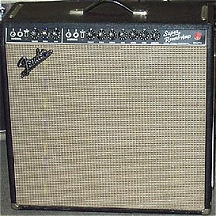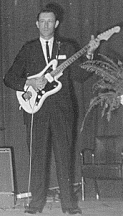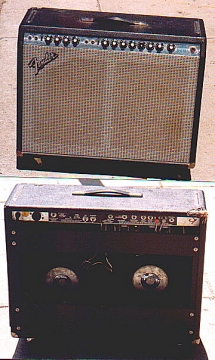For '50s-era guitarists who would soon be playing rock and roll, the
Fender Telecaster hit the music industry with the impact of the asteroid
that wiped out the dinosaurs. Leo Fender's so-called "plank" ushered
in the era of the commercially successful solidbody -- echoing the immense
industrial and social impact of Henry Ford's Model T. While Ford was never
one of Fender's idols, the car maker bestowed the wonders of the automobile
upon the masses by standardizing a sound design, streamlining production
techniques, and lowering costs. Likewise, Fender's "Model T" -- initially
called the Esquire, then the Broadcaster, and finally the Telecaster --
was a powerful, affordable tool that helped a vast community of working
guitarists ignite a cultural revolution.
The tumult was so far-reaching that Gibson was compelled
to introduce the Les Paul to compete with the Tele -- and Leo himself was
inspired to develop the Stratocaster in an attempt o make its older sibling
obsolete. These three models are still modern music's most important guitars
-- and they all have Leo Fender's 1949 "standard guitar" prototype to thank
for kick-starting their enduring glory.
THE ARCHTOP ERA
As twilight fell on the Big Band era toward the end
of World War II, small combos playing boogie-woogie, rhythm and blues,
western swing, and honky-tonk formed throughout the United States. Many
of these outfits embraced the electric guitar because it could give a few
players the power of an entire horn section. Pickup-equipped archtops had
reigned in these late-'40s dance bands, but the increasing popularity of
roadhouses and dance halls created a growing need for louder, cheaper,
and more durable axes. Players also needed faster necks and better intonation
to play what the country boys called "take-off lead guitar," and Rickenbacker
Bakelites and other '30s-era solidbodies failed to deliver. Custom-made
solidbodies such as Merle Travis' Bigsby -- as well as kitchen-table
contraptions like Les Paul's "Log" -- pointed in the right direction, but
were beyond the means of the average player. The demand for better electric
guitars was as obvious as their reality was elusive.
ENTER LEO FENDER
Fender recognized the vast potential for an electric
guitar that was easy to hold, easy to tune, and easy to play. He also recognized
that players needed guitars that would not feed back at dance hall volumes
like the typical archtop. (Many guitarists had to stuff rags into their
elegantly crafted guitars to stop the howling.) In addition, Fender sought
a tone that would command attention on the bandstand and cut through the
noise in a bar. By 1949, he had conceptualized the perfect tone -- a clear,
bell-like sound with distinct highs and lows, but devoid of muddled midrange
frequencies that Fender considered "fluff" -- and began working in earnest
on what would become the first Telecaster at the Fender factory in Fullerton,
California.
Although he never admitted it, Fender seemed to base
his practical design on the Rickenbacker Bakelite. One of the Rickenbacker's
strong points -- a detachable neck that made it easy to make and service
-- was not lost on Fender, who was a master at improving already established
designs. (He once said, "It isn't a radically different thing that becomes
a success; it is the thing that offers an improvement on an already proven
item.") Not surprisingly, his first prototype was a single-pickup guitar
with a detachable hard rock maple neck and a pine body painted white (see
Encore, page 160). The seeds of revolution were sown.
THE ESQUIRE
Don Randall, who managed Fender's distributor, the
Radio & Television Equipment Company, recognized the commercial possibilities
of the new design and made plans to introduce the instrument as the Esquire
Model. (Although Randall -- the company's de facto namesmith -- gave the
Esquire its moniker, Fender supported the name, saying that it "sounded
regal and implied a certain distinction above other guitars.")
In April 1950, Radio-Tel started promoting the Esquire
-- the first Fender 6-string officially introduced to the public. The company
prepared its Catalog No. 2, picturing a black single-pickup Esquire with
a tweed form-fit case. Another picture showed Jimmy Wyble of Spade Cooley's
band holding a blonde Esquire. These debut models, with a planned retail
price of $139.95, exhibited the utilitarian shape of thousands of Fender
guitars to come.
"The Esquire guitar features a new style
of construction which vastly improves the useability of this type of instrument,"
Randall wrote. The claim was further embellished by stating that the guitar
could be played "at extreme volume," and that the fast neck was an aid
to easy fretting.
Randall added, "The neck is also replaceable and
can be changed by the owner in approximately ten minutes time. This feature
eliminates costly repairs and refretting." Fender believed that the neck
was strong enough to resist warping without a trussrod. If a neck did warp,
he planned to mail the customer a new one in a shipping tube.
Unfortunately, the necks didn't turn out to be as
tough as Fender claimed. Randall reported that the necks on his samples
had warped badly while traveling to the 1950 summer trade shows, and asked
that the new guitars be outfitted with reinforced necks. Initially, Fender
had been contentious about the extra effort it would take to design and
manufacture reinforced necks, but then a test guitar in his lab suffered
the same problem. Faced with mounting evidence that his guitar truly needed
a reinforced neck, Fender bought a routing plate to install trussrods on
October 3, 1950.
Randall's primary marketing ploy was to establish
the Esquire in music instruction studios, reasoning that the affordable,
practical guitar would be a hot commodity in those circles. In addition,
a healthy response for the one-pickup version would prime the market for
the more expensive two-pickup model that Fender already had in mind.
In fact, Fender's choice of a 3-position lever switch
-- which allowed three distinct guitar tones -- probably coincided with
his plans to add a rhythm pickup. Fortunately, the Esquire's body design
easily lent itself to both one- and two-pickup configurations. Ultimately,
all production models had cavities routed for two pickups because Fender
wanted players to have the option of adding a pickup in the future. (The
one-pickup models hid an empty cavity under the pickguard.)
The two-pickup Esquires were manufactured with the
second (rhythm) pickup positioned under the strings near the end of the
fingerboard. Fender shielded the rhythm pickup with a metal cover to cut
high harmonics and to emphasize fundamental tones. A handy blend control
knob mixed the rhythm pickup signal with that of the lead pickup when the
pickup selector was in its lead position. Putting the selector in the middle
position activated the rhythm pickup alone. In the forward position, the
rhythm pickup was also selected, but along with a capacitor that rolled
off high frequencies. (Fender called this sound "deep rhythm," and reasoned
that guitarists could use the position to play bass lines.) Dual-pickup
Fender guitars featured these same electronics until 1952.
Although the single-pickup guitars used capacitors
to mimic the mellow sound of a rhythm pickup, the real thing sounded better.
Jimmy Bryant, who epitomized the new wave of postwar electric-guitar wizards,
liked the jazzier sound of the dual-pickup guitar, as did Fender himself.
THE BROADCASTER
The factory finally went into full production in
late October or early November 1950. However, as Fender wanted his best
guitar in the hands of professionals as soon as possible, the factory produced
only dual-pickup Esquires. Fender's decision compromised Radio-Tel's earlier
marketing strategy, forcing Randall to hold orders for the single-pickup
Esquire and come up with a new name for the two-pickup model. The name
Randall chose was "Broadcaster." No one is sure of the exact day he coined
the name, but it coincided with the introduction of the trussrod, as no
authentic non-trussrod Broadcasters are known to exist. (Dealers who insisted
on Esquires had to wait until the single-pickup guitars went into full
production in January 1951 and were delivered the following month.)
Musical Merchandise magazine carried the first announcement
for the Broadcaster in February 1951 with a full-page insert that described
it in detail. The guitar had what Randall called a "Modern cut-away body"
and a "Modern styled head." And what player could resist the "Adjustable
solo-lead pickup" that was "completely adjustable for tone-balance by means
of three elevating screws"?
Finally the industry had an up-to-date production
solidbody. (Fender sold 87 Broadcasters on the guitar's initial release
in January 1951.) Many people took note -- including Gretsch, who claimed
the Broadcaster name infringed on the company's trademark "Broadkaster."
Faced with this fact, Randall wrote a letter to his salespeople on February
21, advising them that Radio-Tel was abandoning the Broadcaster name and
requesting suggestions for a new one.
On February 24, Randall, who had some good ideas of his
own, announced that the Broadcaster was renamed the "Telecaster."
The Broadcaster-to-Telecaster name change cost Radio-Tel
hundreds of dollars, and derailed the initial marketing effort. Brochures
and envelope inserts were destroyed, and some unlucky worker had to clip
the word "Broadcaster" from hundreds of headstock decals with a pair of
scissors. For several months, the new twin-pickup guitars sported nothing
but the word "Fender." Years later, collectors would coin the term
"No-caster" for these early-to-mid-'51 uitars.
TELE TWEAKS
In 1952, Fender replaced the Telecaster's blend control
circuit with a conventional tone control. Now the switch's rear position
selected the lead pickup, the middle position selected the rhythm pickup,
and the front position delivered the "deep rhythm" sound. Teles were equipped
this way until the mid-'60s, when the modern switch setup was introduced:
the middle position selected both pickups, the front position selected
the rhythm pickup, and the rear position selected the lead pickup.
One drawback of the 1952 to mid-'60s wiring is obvious
today: The wiring made a two-pickup combination impossible unless the player
delicately positioned the spring-loaded switch between settings. However,
once players learned this trick, they received a tonal surprise: Different
models produced different dual-pickup sounds, depending on the rhythm pickup's
magnetic polarity. The "between" setting -- which helped define the mystique
of vintage Telecasters -- could offer the robust tone provided by both
pickups or produce a snarly growl similar to the Stratocaster's half-switch
sound. (James Burton, playing his '53 Telecaster, exploited this unique
tone on Ricky Nelson's "Travelin' Man.")
However, it was the Tele's lead pickup that captured
the hearts of most players. Early "level-pole" units offered outstanding
tone with significant bass content and non-offensive highs (although manufacturing
inconsistencies caused a small number of these pickups to produce an out-of-balance,
bass-heavy low-E sound). In mid-1955, Fender staggered the polepiece heights
as he had on Strat pickups. The results were mixed. The volume balance
from string to string was better, but the Tele's overall sound was harsh.
The earliest guitars featured steel bridges that
were ground flat on the bottom. By the end of 1950, Broadcasters boasted
brass bridges with the same tooling marks as the earlier steel ones. In
1953, the factory began notching the two outer brass bridge pieces under
the low E and high E, which allowed a lower adjustment for these strings.
By 1954, Telecasters employed steel bridges again, but they were rounded
and made from a smaller-diameter stock than the 1950 bridges. By 1958,
the bridge pieces were changed yet again to a threaded stock with less
mass, and the factory stopped putting the strings through the body. As
a result, late-'50s models represent the shrillest-sounding and perhaps
the least desirable Telecasters made during the pre-CBS (pre-'65) era.
In 1959, Fender introduced the Telecaster Custom
and Esquire Custom, fancy versions of the originals with white binding
that helped protect the edges from wear. These guitars had Jazzmaster-like
rosewood fingerboards, which looked more traditional and wore better thanone-piece
maple necks. Some early-'60s, pre-CBS Custom Telecasters had necks capped
with maple fingerboards made in the same manner as the necks capped with
rosewood. However, at no time during the pre-CBS years did Fender regularly
produce Customs with the older-style maple neck. (The only exceptions may
have been unlikely special orders.) While the standard Telecasters and
Esquires came with blonde finishes, the Customs were offered with sunburst
finishes. A few even had more expensive custom colors. Moreover, Fender
made some Teles with mahogany bodies in the '60s.
THE PLAYER'S PERSPECTIVE
In the early 1950s, a broad spectrum of Tele players
established themselves in combos -- even young blues legend-to-be B.B.
King spanked the plank. With its versatile sound, ease of playing, and
reasonable cost, what better guitar to yellow with perspiration and cigarette
smoke? Most serious students could afford the $189.50 price, ensuring a
new guitar generation would grow up on Fenders. Still, most players preferred
top-of-the-line instruments, and almost all professional jazz and pop players
employed something other than a Fender. And after Fender introduced the
Stratocaster in '54, the Tele wasn't even Fender's top-of-the-line ax.
Then an interesting thing happened. By the late '50s,
the Telecaster was becoming an integral part of the session player's arsenal.
California-based guitarist Howard Roberts endorsed Gibson and Epiphone
but also played an old Telecaster on countless rock sessions, as did Tommy
Tedesco. These players knew what models recorded best and pleased record
producers. The Telecaster and its solidbody cohorts produced the teenage
sound that proclaimed a guitar generation gap: old versus new, jazz and
pop conformity versus rock rebellion. At the same time, the Tele was heard
increasingly on pure country recordings, treading in the big-box domain
of Chet Atkins and Hank Garland (who sounded anything but twangy).
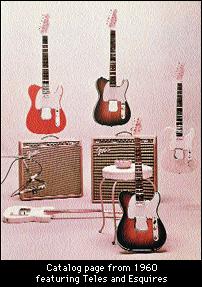 As the '60s unfolded and rock guitar playing matured,
the Telecaster's role, onstage and off, solidified. While the guitar played
a small part in the rise and fall of instrumental rock and surf music,
Steve Cropper played one with Booker T. and the MGs, as did the Ventures'
Nokie Edwards. James Burton and Tele moved from Ricky Nelson's band to
TV's Shindogs, all the while chalking up hours as L.A.'s premier session
stylist in rock and country.
As the '60s unfolded and rock guitar playing matured,
the Telecaster's role, onstage and off, solidified. While the guitar played
a small part in the rise and fall of instrumental rock and surf music,
Steve Cropper played one with Booker T. and the MGs, as did the Ventures'
Nokie Edwards. James Burton and Tele moved from Ricky Nelson's band to
TV's Shindogs, all the while chalking up hours as L.A.'s premier session
stylist in rock and country.
Much of the British Invasion had the look of Rickenbackers
and Gretsches, but Eric Clapton and Jeff Beck recorded many of their milestone
sides with the Yardbirds on a Telecaster and Esquire, respectively. Mike
Bloomfield chose a Tele for his highly influential mid-'60s work with Paul
Butterfield and Bob Dylan, and Jimmy Page played one on Led Zeppelin's
first album and on the solo of "Stairway to Heaven."
As Roy Buchanan told Guitar Player in '76, "The Telecaster
sounded a lot like a steel, and I liked that tone. I like the old
Teles because of the wood, the way the pickups are wound, the capacitors,
and the whole works."
THE TELE LEGACY
By the late '60s, it was clear the Telecaster had
shaken the foundations of the music industry. The Tele -- and the host
of solidbody models introduced as a result of its success -- changed the
way the world heard, played, and composed music. Ironically, Leo Fender,
who worked incessantly after '51 developing new models such as the Strat,
Jazzmaster, and Jaguar (and then, in the '70s and '80s, formulating Music
Man and G&L models), had a very hard time topping what he accomplished
in his first go-round.
"Everyone thought his first guitar was his best,
but no one would tell him that," said longtime friend and pioneering electric
stylist Alvino Rey in the '80s. The Tele was Leo Fender's Model T, but,
unlike the old Fords, it didn't go away. For thousands of guitarists, the
Telecaster is still state of the art -- an enduring battle ax for rock,
country, or anything amplified.
THE WHOLE STORY
For a more comprehensive tome on the history
of Fender guitars, check out Richard R. Smith's Fender: The Sound Heard
'Round the World [Garfish Publishing]. In addition to curating the 1993-94
exhibition "Five Decades of Fender" at the Fullerton Museum Center and
writing articles for numerous guitar publications, Smith worked with Leo
Fender himself, testing the master's late-career prototypes.


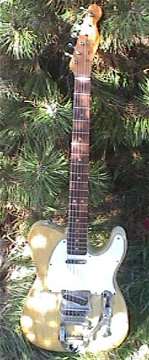 .
.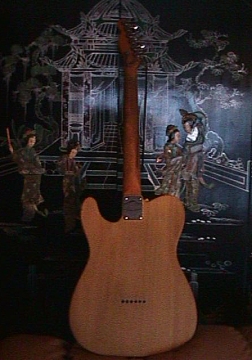 .
.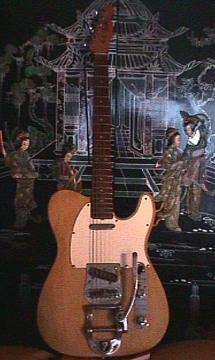


 .
. .
.
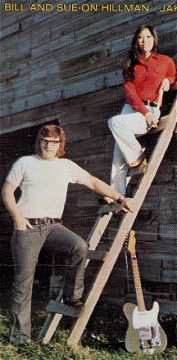
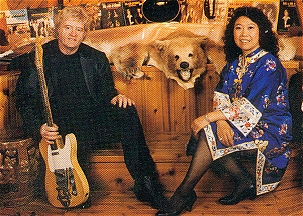
![]()
![]()

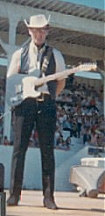


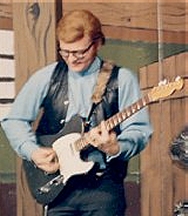
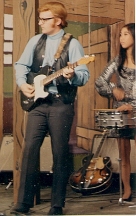
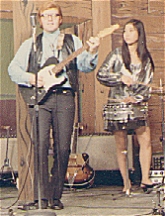
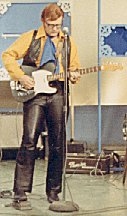
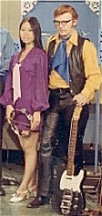
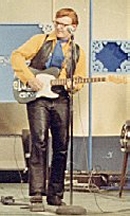
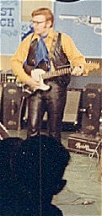
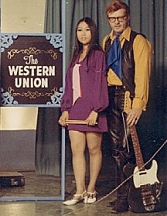

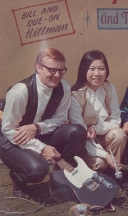
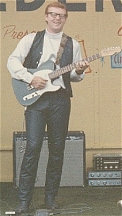

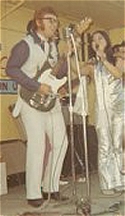
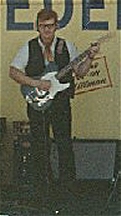

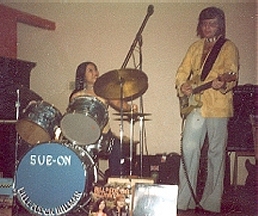
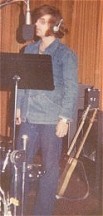
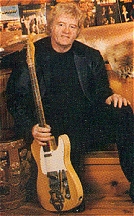
![]()
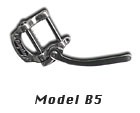
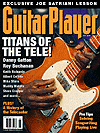
![]()
![]()
